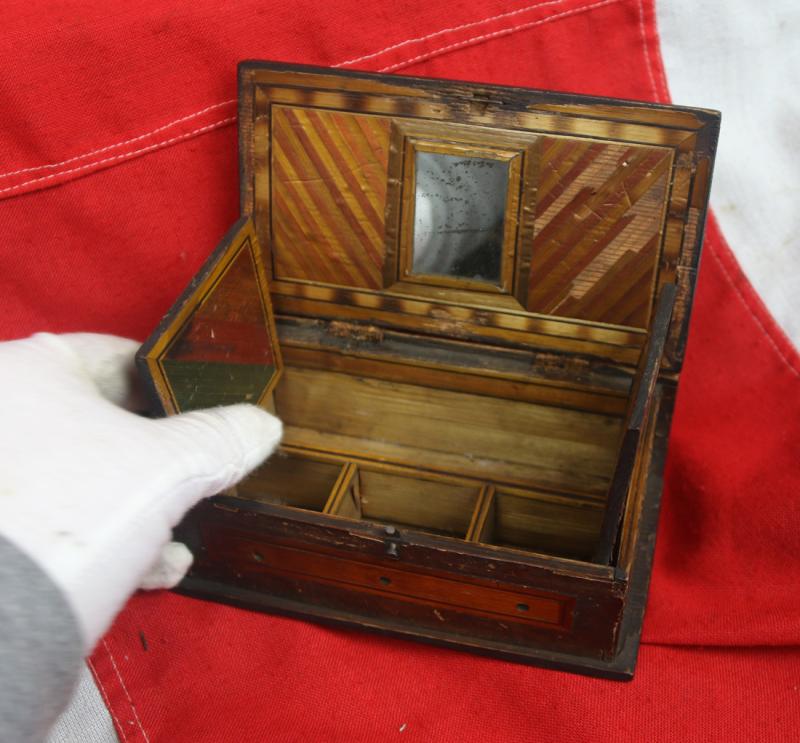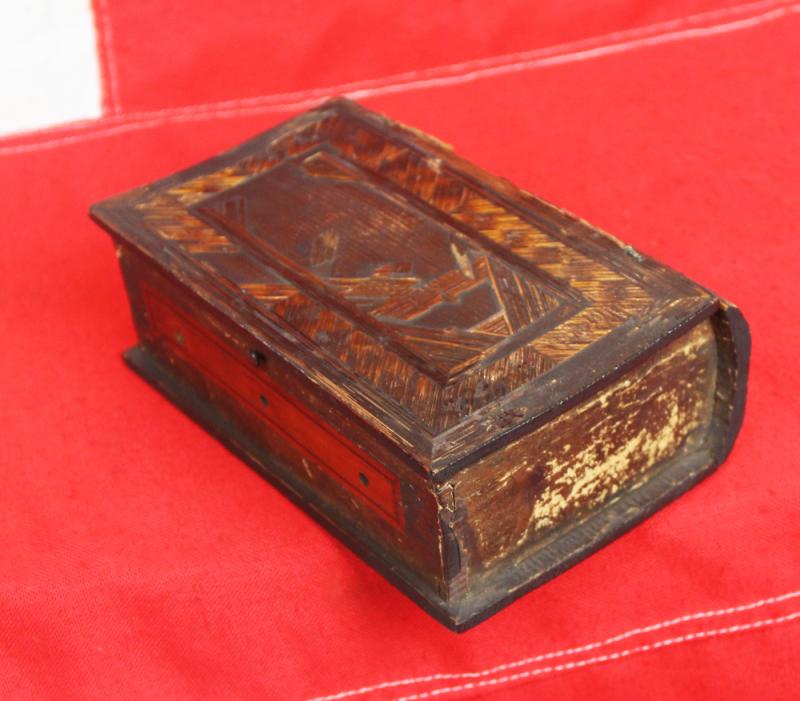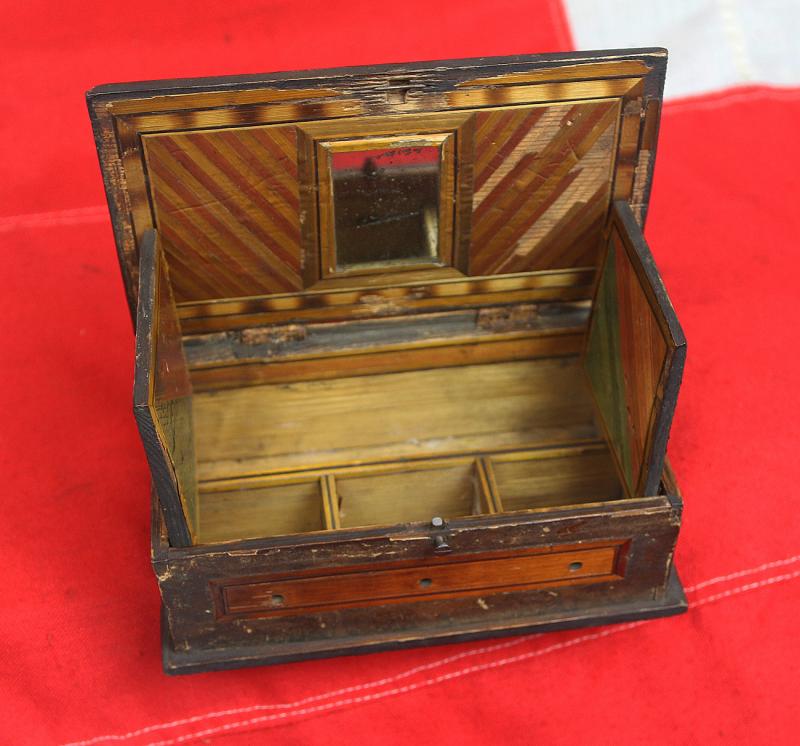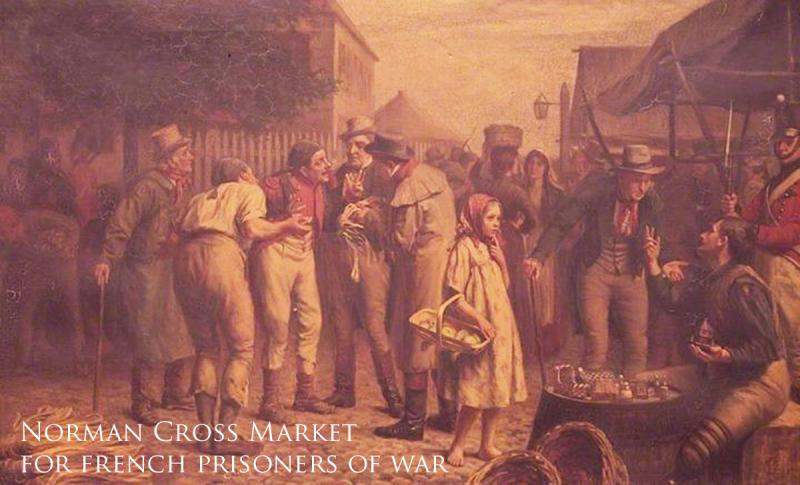A Superb Napoleonic French 'Prisoner-of-War' Portable Travelling Dressing Case, Shaped in the Form of a Book
In wood covered in straw-work parquetry. crafted by a prisoner of war during the1793 - 1815 War between Napoleon's French Navy and the Naval forces of King George III of England. This piece was hand crafted by a captive, French, master artisan who created this unbelievably detailed box with nothing but coloured pieces of straw, paper and scraps of wood, {often taken from their bunks} for a frame, and boiled glue. This piece would have taken weeks to hand create, and the tiny pieces of straw are somehow cut into thousands of minuscule pieces and assembled in tiny multicoloured geometric patterns. A very similar example to one that is on display in the Burghley House Collection. Made by the captured Napoleonic and French wars French Prisoners-of-War in the early 1800's in order to subsidise their meagre prison rations, and this fine piece is made to give the impression it is a sizeable book when closed. The interior bears two small sections, lidded compartments with interior mirror in Georgian Vauxhall plate, and a geometric parquetry All of the interior straw-work is pristine in colour and unfaded showing wonderful contrasts.
Great Britain was at war with France continuously from 1793 to 1802. Hostilities ceased briefly in 1802, but conflict soon recommenced. The Napoleonic Wars continued until 1815, when Napoleon?s forces were finally defeated at Waterloo.
For example,iIn 1796 the first prison to house French prisoners was built at Norman Cross, some 5 miles north of Peterborough. Conditions must have been both harsh and crowded; disease killed more that 1,700 inmates between 1797 and 1814.
To supplement their rations and to provide small income, some prisoners made ornaments, models and toys, which they were allowed to sell. The materials used included straw, wood, bone and even human hair. Many of the items made were extraordinary in their complexity and design and were always very desirable to collectors. The proximity of Burghley House to the camp meant that members of the Cecil family acquired many fine examples.
Those displayed at Burghley include a number of containers made of wood with applied decoration of coloured straw, a stationery box, a set of bone spillikins in a pocket case, a framed straw-work picture of the house built for Napoleon Bonaparte on St Helena, to where he was exiled, a bone set of dominoes and playing cards and a detailed model of an 80-gun ship-of-the-line with hair rigging..
Two photos in the gallery are of New Cross market for the French POWs to sell their wears and hand made pieces to the locals and nobility who used to travel to such markets to buy these pieces that were incredibly popular with members of the aristocracy and high society. a a painting of a prison hulk in Sheerness, often made from the hulks of a scrapped old British man o'war, or a captured, damaged French or Spanish frigate,
Code: 24739
465.00 GBP










